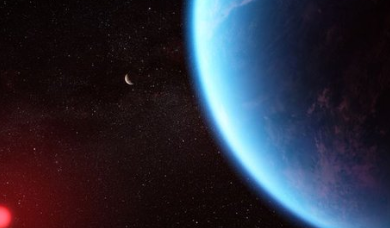It’s a shame that absent some new technology that will enable humanity to travel faster than light speed, these so-called Earth-like planets are all destined to stay a apart of our fantasies.
Recent discoveries by the James Webb Space Telescope have reignited interest in a distant exoplanet known as LHS 1140 b, situated 49 light years from Earth. This intriguing world, which orbits a red dwarf star, has captured the scientific community’s attention due to its placement in the “Goldilocks” zone—the region around a star where conditions may be just right to support liquid water.
For years, astronomers debated whether LHS 1140 b was a mini-Neptune with a thick atmosphere of hydrogen and helium, or a denser super-Earth composed of rock and potentially water. New data from James Webb, combined with observations from other telescopes, suggest that this world leans towards the latter category, with some striking characteristics.
The planet’s density is lower than many other rocky planets, leading researchers to estimate that 10 to 20% of its mass could be water. This composition hints at a world that may not only have vast amounts of water but could actually host liquid oceans. Intriguingly, this water is most likely to be found in a liquid state on the side of the planet that perpetually faces its star, painting a picture of a celestial snowball with a habitable twilight zone.
Wow! Telescope data shows the possibility of an ice planet with a liquid water ocean on part of its surface. https://t.co/QAeYS1xfhJ
— Hey, it’s Brian (@brianhalligan) July 9, 2024
The University of Montreal’s team, spearheading the research, suggests that LHS 1140 b could also possess a nitrogen-rich atmosphere. Such an atmosphere would mirror Earth’s own protective blanket and could play a crucial role in sustaining stable bodies of liquid water. If confirmed, this feature would mark the planet as an even more compelling target for future habitability studies.
As scientists delve deeper into the data, the goal is to confirm the presence of an atmosphere and to identify the elements it contains. This ongoing analysis is critical for understanding whether LHS 1140 b could potentially support life or if it merely remains a frozen, albeit fascinating, world.
The potential discovery of liquid water and a supportive atmosphere on LHS 1140 b positions it as a prime candidate in the ongoing search for life beyond our solar system. It underscores the importance of innovative space telescopes like James Webb, which allow us to peer into distant worlds with unprecedented clarity.
James Webb telescope sees potential signs of alien life in the atmosphere of a distant ‘Goldilocks’ water world https://t.co/7CW3mhON3v
— bryce swan (@drdivinity) July 8, 2024
As the quest to map the cosmos and pinpoint habitable planets continues, LHS 1140 b serves as a reminder of the universe’s vast mysteries waiting to be unraveled. The findings from this planet could have profound implications for our understanding of planetary formation, the conditions that foster life, and the frequency of habitable worlds in our galaxy.
Key Points:
i. LHS 1140 b, an exoplanet 49 light years away, is located in the habitable “Goldilocks” zone of its red dwarf star.
ii. Recent data suggest it is a super-Earth with a significant percentage of its mass potentially composed of water.
iii. The planet might have a nitrogen-rich atmosphere, enhancing its potential to support liquid water.
iv. Ongoing studies aim to confirm the presence of an atmosphere and analyze its components.
v. LHS 1140 b is a key focus in the search for habitable planets beyond our solar system, highlighting the capabilities of the James Webb Space Telescope.
Charles William III – Reprinted with permission of Whatfinger News



